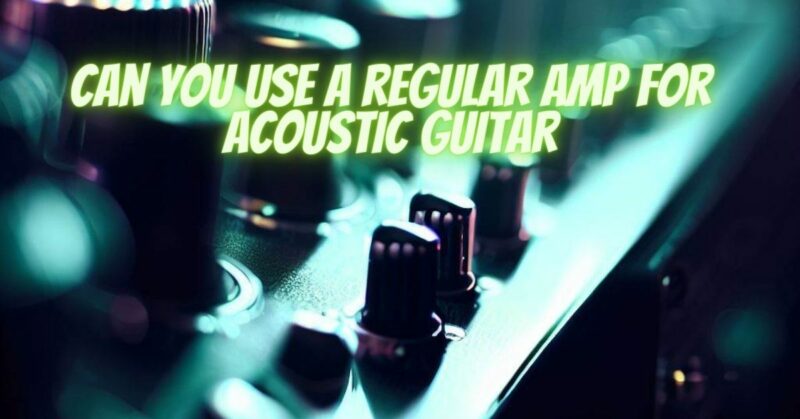The world of music is brimming with possibilities, often prompting musicians to explore unconventional avenues. One such scenario involves using a regular amplifier, typically designed for electric guitars, to amplify an acoustic guitar. This practice raises questions about tone, compatibility, and potential limitations. In this article, we’ll delve into the considerations, benefits, challenges, and potential outcomes of using a regular amplifier for an acoustic guitar.
Understanding Regular Amplifiers
Regular amplifiers, often designed for electric guitars, are engineered to enhance the tonal characteristics of electric instruments. They often emphasize effects, distortion, and overdrive to suit the dynamic range of electric guitars.
Using a Regular Amp for an Acoustic Guitar: Considerations
- Tonal Transformation: Amplifying an acoustic guitar through a regular amp can lead to a tonal transformation, resulting in a sound that might differ significantly from a dedicated acoustic amplifier.
- Feedback Sensitivity: Acoustic guitars are more prone to feedback due to their natural resonance. Regular amps might amplify this sensitivity, requiring careful management.
- Effects Compatibility: Regular amplifiers might not cater to the natural acoustic sound, and certain effects like distortion might not suit the acoustic guitar’s tonal characteristics.
Benefits of Using a Regular Amp for an Acoustic Guitar
- Creative Experimentation: Using a regular amp can introduce a unique sonic character to your acoustic sound, suitable for experimental genres and artistic expression.
- Tonally Distinct Performances: If you’re aiming for a departure from traditional acoustic tonality, a regular amp can provide an edgy and distinct sound.
- Effects Integration: Regular amps often feature a range of built-in effects that can be creatively integrated into your acoustic performance.
Challenges and Potential Drawbacks
- Tonal Clarity: Regular amps might not accurately reproduce the natural resonance and clarity that dedicated acoustic amplifiers offer, leading to compromised tonal quality.
- Feedback Management: Acoustic guitars amplified through regular amps might be more prone to feedback, necessitating careful positioning, EQ adjustments, and feedback control techniques.
- Effects Integration: While certain effects might work well with an acoustic guitar, others, such as heavy distortion, might not complement the natural acoustic sound.
Expert Tips for Using a Regular Amp with an Acoustic Guitar
- Effects Selection: Experiment with effects that enhance your acoustic sound without overpowering its natural resonance.
- Feedback Control: Implement techniques like proper positioning, EQ adjustments, and the use of feedback suppressors to manage unwanted feedback.
- EQ Adjustments: Utilize the amp’s EQ controls to tailor the tone to your acoustic guitar’s sonic characteristics.
Using a regular amplifier to amplify an acoustic guitar presents an opportunity for sonic exploration and artistic innovation. While challenges exist and tonal outcomes may vary, the creative potential lies in crafting a unique acoustic sound that transcends traditional boundaries. By embracing the interaction between your acoustic guitar and the regular amp, you can create a sound that resonates with your artistic vision and captivates listeners seeking a fresh and unconventional auditory experience.


